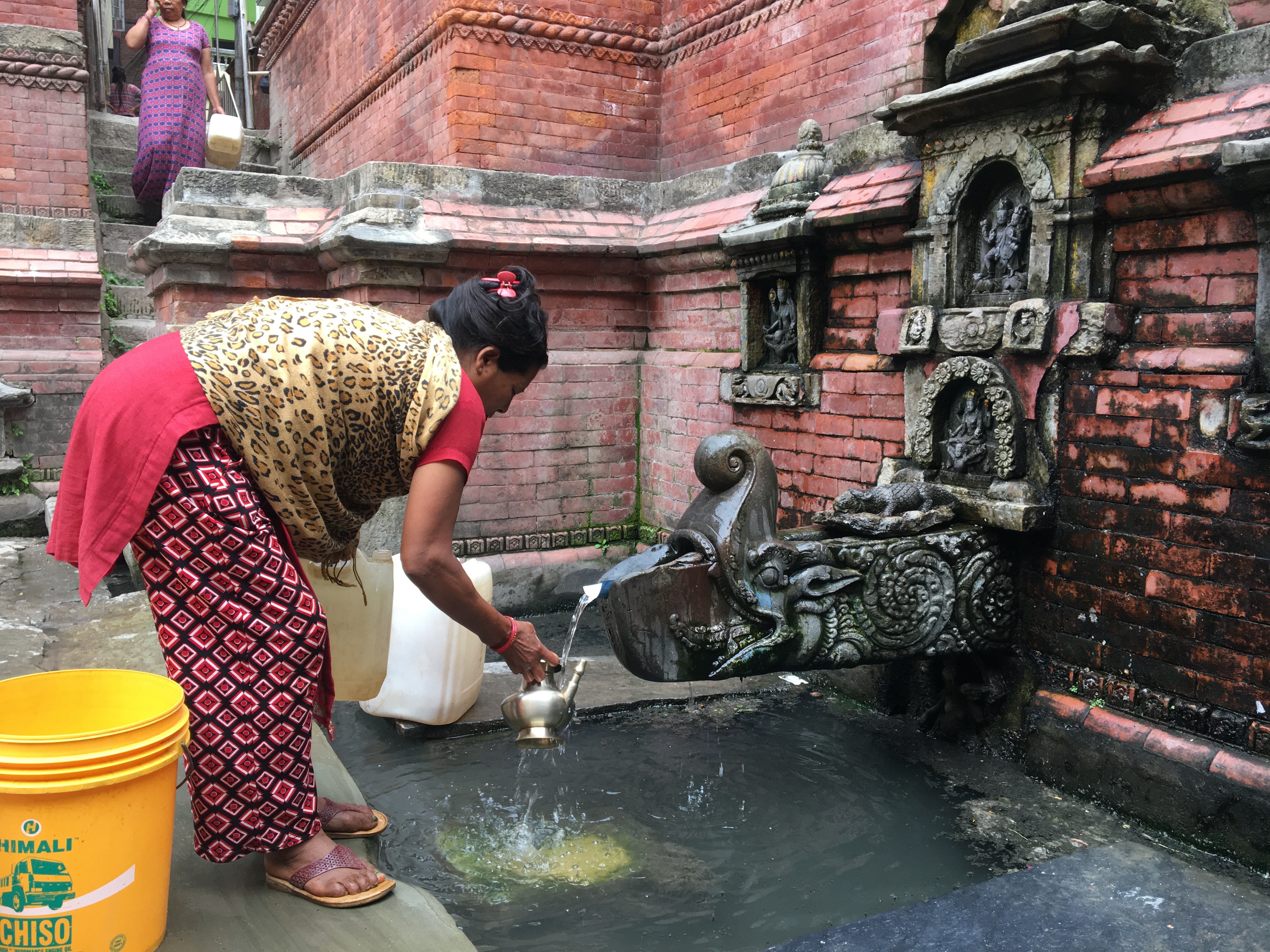Maru Hiti, Kathmandu
Curated by Dr. Monalisa Maharjan and Radha Malkar

Maru Hiti, located at the Maru Ṭola, is one of the best-known stone spouts in the Kathmandu Valley. It was probably constructed as a part of the Kāṣṭhamaṇḍapa and lies on its western side on the road to Kaṅga Ajimā Temple. The close proximity to Kāṣṭhamaṇḍapa and Maru Gaṇeśa Temple makes this hiti historically and culturally significant. A popular Newar folk song ‘Rājamati, Kumati…’ from the early nineteenth century mentions it.
Although many waterspouts in the Kathmandu Valley have lost their significance, Maru Hiti continues to be a place for worship and social interaction. Devotees, who participate in the religious procession of upākhā, taking place on the twelfth day of the bright fortnight of Bhādra, have to wash their faces in this hiti. The hiti was a resting place for travellers entering the core city of Kathmandu via Kaṅkeśvarī. It has five water spouts decorated with stone statues but only two still have flowing water. The hiti used to be cleaned during the Sithinakha Festival held on the sixth day of the bright fortnight of Jyeṣṭha and there used to be a guthi of Mahajans that provided food for the participants. This tradition has been discontinued and the guthi is inactive. However, the Maru Hiti Club, a local youth organization, cleans and takes care of the hiti from time to time. According to Shankar Maharjan Dongol, the former president of the club, the hiti was restored fifteen years ago. Concrete pavement was removed and replaced with traditional bricks.
For information on the Maru Hiti, please visit DANAM.
